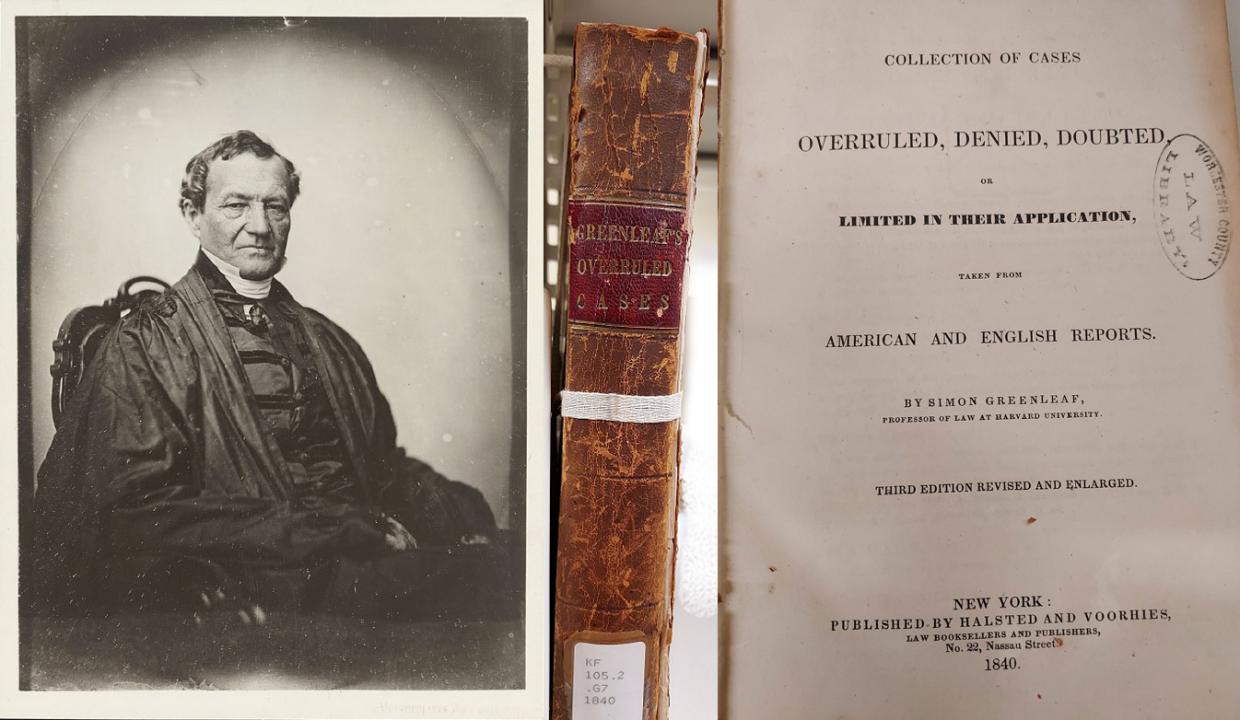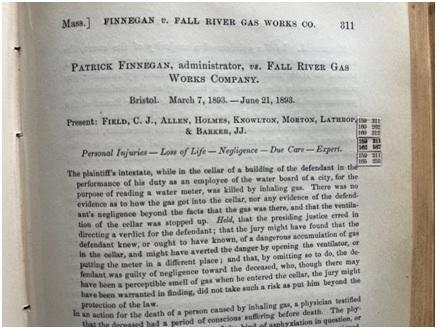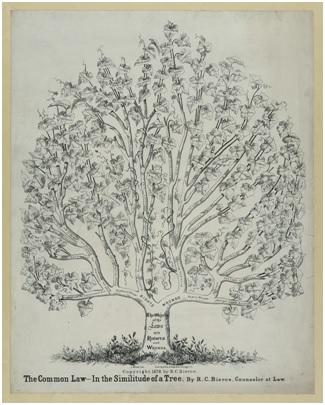- Trial Court Law Libraries

In the print world, legal researchers had a variety of tools that they could use to find cases to support a legal argument. Some of these specialized finding tools included reporters (collections of opinions and decisions organized by level and locations of the courts), digests (multi-volume sets arranged in alphabetical order by subject used to find case law on very specific legal topics), and citation indexes. The citation index can be defined as "a structured list of all the citations in a given collection of documents. . . usually arranged so that the cited document is followed by the citing documents."*
Citation indexes intended to be used as legal research tools were developed in the early nineteenth century. The first legal citation index published in the United States was Simon Greenleaf's A Collection of Cases Overruled, Doubted, or Limited in Their Application (1821). Patti Ogden, in her 1993 article in Law Library Journal, "'Mastering the Lawless Science of our Law': A Story of Legal Citation Indexes", recounts how Greenleaf, a small town attorney in Gray, Maine in 1807, lost a case because his legal argument depended upon a case that had been overturned. At that time, there was no tool to help find authoritative cases to cite in a legal argument. He set about making a list or table of overruled cases.
Simon Greenleaf (1783-1853), after a photograph by Southworth & Hawes
Greenleaf's A Collection of Cases Overruled, Denied, Doubted, or Limited in their Application, taken from American and English Reports. For more information about Simon Greenleaf, see Law Librarians of Congress Blog, "Collection Highlights: Simon Greenleaf and the First American Legal Citation Index".
In 1875, Frank Shepard began publishing citation books in a new format. Stark columns of numbers, the citations for citing cases, followed the cited case. He instructed users to cut out the list of citing cases, and affix the list to the margin of the cited case in a reporter. Eventually, there was a Shepard's citation book covering the cases and statutes for every state and federal jurisdiction. The citation system developed by Frank Shepard became the gold standard. These books "allow[ed] researchers to track particular judicial decisions, statutes, and other legal resources as they are invoked at different historical moments for a range of purposes. Shepard's citations provide references to when and how cases and law review articles were cited by other sources."** It is important to note that citation indexes such as Shepard's have been used for more than just determining whether a case is still good law. A legal argument needs to be bolstered by authority and precedent, reference to seminal cases; citation indexes can be used to find these cases.
Finnegan v. Fall River Gas Works Co., 159 Mass. 311 (1893) with Shepard's Massachusetts citations pasted in the margin.
In 2022, Yale Law School held a symposium on "The Role of Citation in the Law." The presentation by Thomas Keefe of Loyola University entitled "The Evolution of Citation Analysis as a Tool for Caselaw Research" takes us into the 21st century. Keefe points to “the merging of citation indexing and computer technology [that has] created a new case-finding tool unlike any previously available."*** Shepardizing a case in print was a time-consuming project. Shepardizing online is not only easier and faster, but reveals additional information, and it provides easy access to the cases cited. What came to be known as Computer Assisted Legal Research has provided a new way of looking at the law. Using mathematical tools that computers make possible, citation analysis can "map the relationships among case citations within a legal citation framework."**** Legal scholars have been able to visualize the law as a network with hubs and spokes in a new way. While using metaphors of webs, trees, and bramble bushes to evoke the structure of the law is not a new concept, citation analysis by computers reveals cases at the center of the strongest hubs by digesting massive amounts of data previously impossible without the aid of a machine.
The Common Law in the Similitude of a Tree – by R. C. Bierce, Counselor at Law, Ezra A. Cook & Co., Chicago, Illinois, 1878. Library of Congress Prints and Photographs Online Catalog.
For more information about this image, see Massachusetts Law Updates blog post "Understanding Blackstone".
We can point to a couple of examples to show how legal publishers use big data to help us to see the "shape and structure of law."
As Thomas Keefe points out in his article, "Fastcase designers abandoned the index system and instead linked queries to cases, primarily through a combination of citation frequency and relative citation strength. . . automatically [showing] the number of times each case has been cited."***** Fastcase is a legal research service that is available as a member benefit to all lawyers who are members of their state bar associations. The company has prioritized bringing big data analytics, visualization, and work-flow tools to online legal research.
New tools have also been developed that give legal researchers the option of determining which cases and language individual judges are most likely to favor. Known as "language analytics" (Lexis) or "precedent analytics" (Westlaw), these tools "extract key language from court opinions and relevant documents and then use machine learning and AI technology to identify the most cited cases, most cited judges, and language patterns."
Massachusetts Trial Court Law Libraries, with 15 locations throughout the Commonwealth, provide free access in the libraries to both Lexis and Westlaw. Anyone visiting the libraries can use either Lexis' Shepard's Citations or Westlaw's KeyCite to check the status and citation history of a court case, statute, regulation, or administrative ruling. If you need help finding or using any of the Law Libraries' resources, Ask A Law Librarian will offer you several ways to ask a question.
Footnotes
*5 Encyclopedia of Library and Information Science 16 (1971).
**Shepard's citations
***Thomas Keefe, "The Evolution of Citation Analysis as a Tool for Caselaw Research." The Role of Citation in the Law: A Yale Law School Symposium, W.S. Hein & Co., Inc., 2022. p. 642.
****Keefe, Ibid., p. 638.
*****Keefe, Ibid., p. 651.



